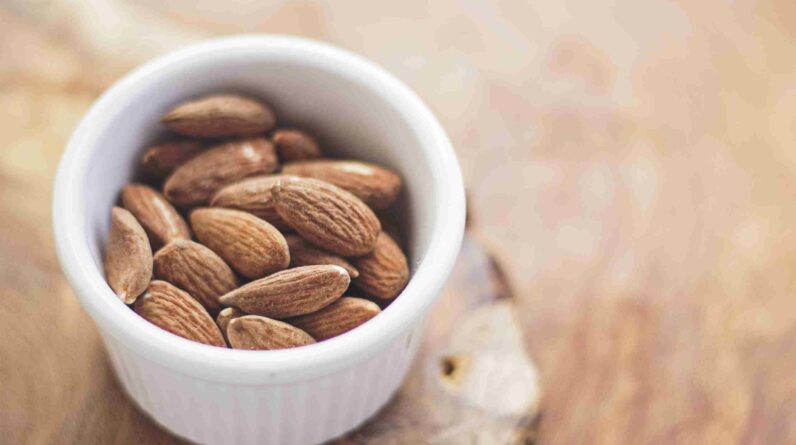Looking to thaw frozen food but not sure of the safest method? Look no further! In this article, we will explore the various ways to thaw frozen food while ensuring optimum safety. Whether you’re thawing meat, vegetables, or dessert, we’ve got you covered with expert tips and tricks. Say goodbye to risky thawing practices and hello to a safer culinary journey!

Why is it important to thaw frozen food safely?
Thawing frozen food safely is of utmost importance for two key reasons: preventing bacterial growth and maintaining food quality. When food is frozen, any bacteria or pathogens present in it are rendered inactive. However, as the food begins to thaw, the conditions become ideal for bacterial growth, which can lead to foodborne illnesses. Thawing food properly ensures that the temperature remains out of the bacterial danger zone, which is between 40°F (4°C) and 140°F (60°C). Additionally, thawing food safely helps maintain its texture, flavor, and nutritional value, leading to a more enjoyable and wholesome meal.
Thawing methods to avoid
While there are multiple ways to thaw frozen food, there are certain methods that should be avoided due to the potential risks they pose.
Leaving food at room temperature
Leaving food to thaw at room temperature is one of the most common but unsafe methods. As the food sits at room temperature, the outer layers thaw first while the inner parts remain frozen. This temperature gradient promotes bacterial growth, increasing the risk of foodborne illnesses. Additionally, if the food has been sitting out for more than two hours, it can enter the temperature danger zone, further multiplying the risk of bacterial contamination.
Using hot water
Using hot water to thaw frozen food should be avoided. Although it may seem like a quick solution, submerging the food in hot water can cause uneven thawing, similar to the room temperature method. The outer layers thaw rapidly while the inside remains frozen, creating an environment where bacteria can thrive. Additionally, hot water can raise the temperature of the food to the danger zone, leading to potential foodborne illnesses.
Microwaving on high power
Microwaving frozen food on high power is another method to be cautious of. While microwaves can expedite the thawing process, high power settings can cause partial cooking of the food, resulting in uneven thawing and potential foodborne illnesses. It is important to note that microwaving on low power is a recommended thawing method, which will be discussed later in this article.

Recommended thawing methods
To ensure both food safety and quality, it is important to follow the recommended thawing methods.
Refrigerator thawing
One of the safest methods is thawing food in the refrigerator. This method requires planning ahead, as it takes the longest time but yields optimal results. To thaw food in the refrigerator, simply place the frozen item on a plate or in a sealed container and allow it to thaw gradually. This method ensures a consistent and controlled thawing process, keeping the food out of the danger zone. While it may require patience, refrigerator thawing is the preferred method for most types of food.
Cold water thawing
When time is of the essence, cold water thawing is an effective method. To utilize this method, place the frozen food in a leak-proof plastic bag and submerge it in cold water. Ensure that the water remains cold, changing it every 30 minutes to maintain a safe temperature. This method allows for quicker thawing than the refrigerator but still prevents the food from entering the danger zone. Cold water thawing works best for smaller portions of food or items with flexible packaging.
Microwave thawing with low power
For a faster thawing method, the use of a microwave on low power is recommended. The low power setting ensures a gentler thawing process, minimizing the risk of partial cooking and preserving food quality. When using the microwave, it is essential to follow the manufacturer’s instructions and rotate the food during the process to promote even thawing. While this method is convenient, it is important to note that it is best suited for smaller cuts of meat or individual portions.
Best practices for thawing different types of food
Different types of food require specific thawing techniques to maintain their quality and ensure safe consumption. Here are the recommended thawing methods for various food categories:
Meat and poultry
To safely thaw meat and poultry, the refrigerator thawing method is recommended. It allows for a slow and controlled thaw, minimizing the risk of bacterial growth. Ensure that the meat is securely wrapped or stored in a leak-proof container to avoid cross-contamination.
Seafood
Seafood is best thawed using the refrigerator or cold water method. The refrigerator method is ideal for delicate seafood, such as fillets, while the cold water method works well for larger seafood items like whole fish or shellfish. Proper packaging and timely changes of cold water will help maintain the quality of the seafood.
Frozen vegetables and fruits
When it comes to thawing frozen vegetables and fruits, the refrigerator method is the safest and most effective. It preserves their texture and nutrient content while preventing bacterial growth. However, certain fruits like berries or small pieces can be thawed using the cold water method to expedite the process.
Bread and baked goods
For thawing bread and baked goods, the refrigerator method is the go-to option. It ensures gradual thawing, preventing the bread from becoming soggy or losing its texture. Alternatively, bread and baked goods can also be thawed in the microwave using the low power setting, especially if they are intended to be reheated or toasted.

Tips for safely thawing frozen food
To ensure the safe thawing of frozen food, it is helpful to follow these additional tips:
Plan ahead
Thawing food safely requires planning, especially when using the refrigerator method. Take into account the thawing time needed and factor it into your meal preparation. Avoid the temptation to rush the process with alternative methods that may compromise food safety.
Use proper packaging
When thawing food, ensure it is properly packaged to prevent cross-contamination. Use leak-proof plastic bags, sealed containers, or appropriate wrapping techniques. This helps maintain food quality and prevents any potential bacterial contamination during thawing.
Monitor thawing process
Throughout the thawing process, monitor the food regularly to ensure it remains within safe temperature ranges. Use a food thermometer to check the temperature, especially for meat and poultry, to ensure it does not enter the danger zone. If using the microwave, carefully rotate and stir the food to promote even thawing.
Refrigerator thawing
Refrigerator thawing is a safe and reliable method for thawing frozen food. Here are the instructions for refrigerator thawing:
- Clear a space in the refrigerator for the frozen item.
- Place the frozen food on a plate or in a sealed container to catch any drips.
- Leave the food to thaw in the refrigerator for the recommended time (see next section).
- Ensure the food is fully thawed before cooking or consuming.
Recommended thawing times
The thawing time required for refrigerator thawing can vary depending on the size and type of food. As a general guideline, here are the recommended thawing times for some common food items:
- Small cuts of meat or poultry (up to 3 pounds): 1 to 2 days
- Whole chickens or turkeys: 1 day per 4-5 pounds
- Fish fillets: 24 hours
- Ground meat: 1 to 2 days
- Frozen vegetables and fruits: 4 to 8 hours

Cold water thawing
When using the cold water thawing method, it is important to follow these instructions:
- Place the frozen food in a leak-proof plastic bag, ensuring it is fully sealed.
- Fill a large bowl or basin with cold water.
- Submerge the bag of frozen food in the cold water.
- Change the water every 30 minutes to maintain a safe temperature.
- Once thawed, cook or consume the food immediately.
Recommended thawing times
The recommended thawing times for cold water thawing depend on the size and thickness of the food. Here are some estimated times for common food items:
- Small cuts of meat or poultry (up to 3 pounds): 1 to 3 hours
- Whole chickens or turkeys: 30 minutes per pound
- Fish fillets: 1 to 2 hours
- Ground meat: 1 to 2 hours
- Frozen vegetables and fruits: 1 to 2 hours
Microwave thawing with low power
When using the microwave to thaw frozen food, it is essential to follow these instructions:
- Place the frozen food on a microwave-safe dish.
- Set the microwave to the lowest power level available.
- Thaw the food in short increments, usually 1 to 2 minutes at a time, depending on the food’s size.
- Rotate or stir the food during the thawing process to promote even thawing.
- Cook or consume the food immediately after thawing.
Recommended thawing times
The recommended thawing times for microwave thawing can vary depending on the power level and food type. Here are some estimated times for common food items:
- Small cuts of meat or poultry (up to 3 pounds): 3 to 5 minutes per pound
- Fish fillets: 3 to 4 minutes per pound
- Ground meat: 2 to 3 minutes per pound
- Frozen vegetables and fruits: 2 to 3 minutes

Safe handling after thawing
After thawing frozen food safely, it is crucial to handle it properly to maintain its safety and quality.
Cooking immediately
One of the best practices after thawing is to cook the food immediately. This ensures that any bacteria that may have started to reactivate during the thawing process are destroyed by the cooking heat. Be sure to follow the recommended cooking temperatures and times for each specific food item.
Storing in the refrigerator
If you do not intend to cook the thawed food immediately, store it in the refrigerator. This helps maintain its freshness and prevents bacterial growth. Ensure the food is stored in airtight containers or wrapped securely to avoid cross-contamination with other items in the refrigerator. Consume the food within the recommended timeframe to ensure optimal quality and safety.
Conclusion
Thawing frozen food safely is a crucial step in preventing foodborne illnesses and maintaining the quality of the food we consume. By avoiding unsafe thawing methods such as leaving food at room temperature, using hot water, or microwaving on high power, we can significantly reduce the risk of bacterial growth and potential health hazards. Instead, following the recommended thawing methods of refrigerator thawing, cold water thawing, or microwave thawing with low power ensures that our food remains safe and delicious. By implementing best practices such as planning ahead, using proper packaging, and monitoring the thawing process, we can enjoy the benefits of properly thawed food – both in terms of safety and taste.










